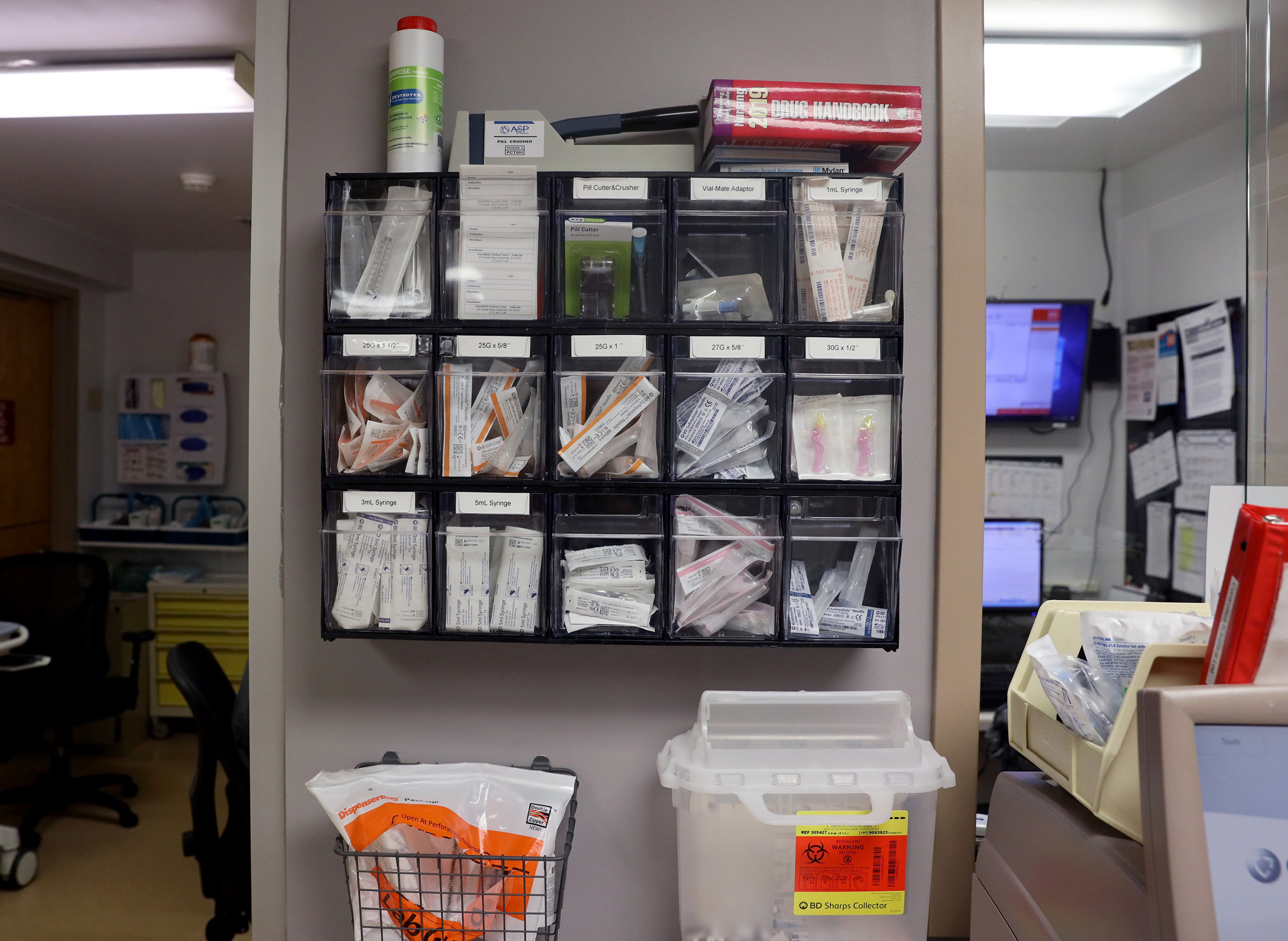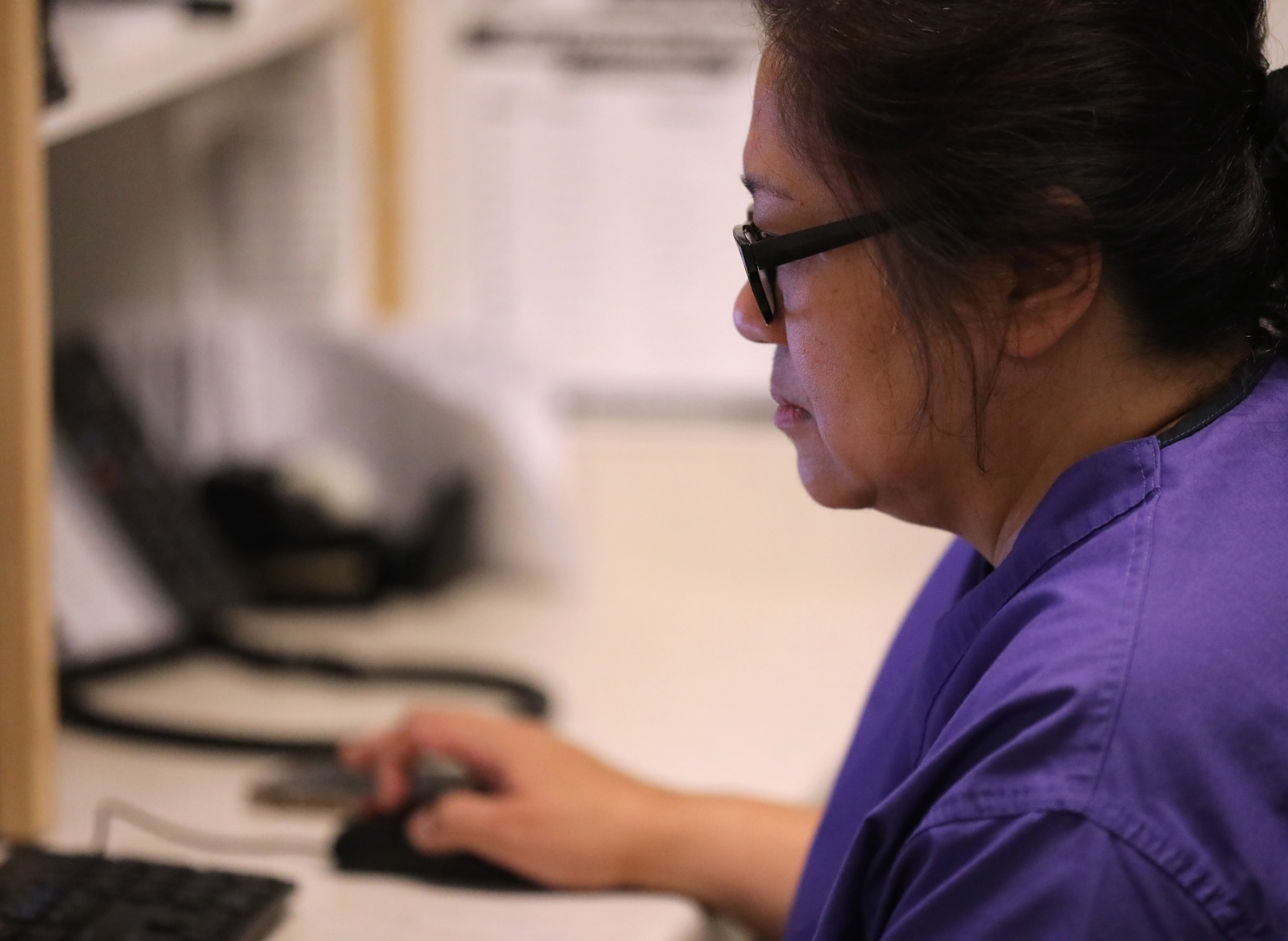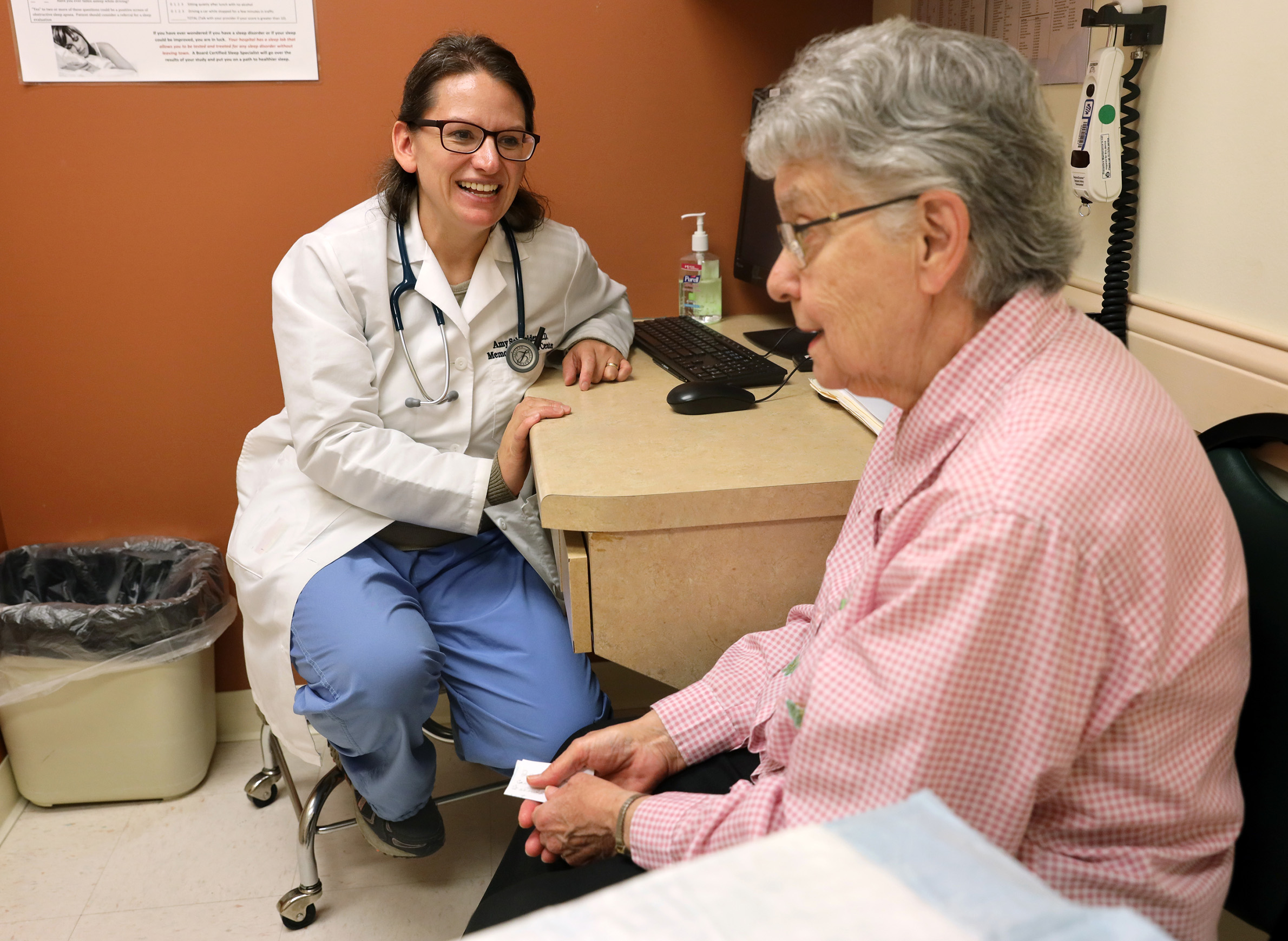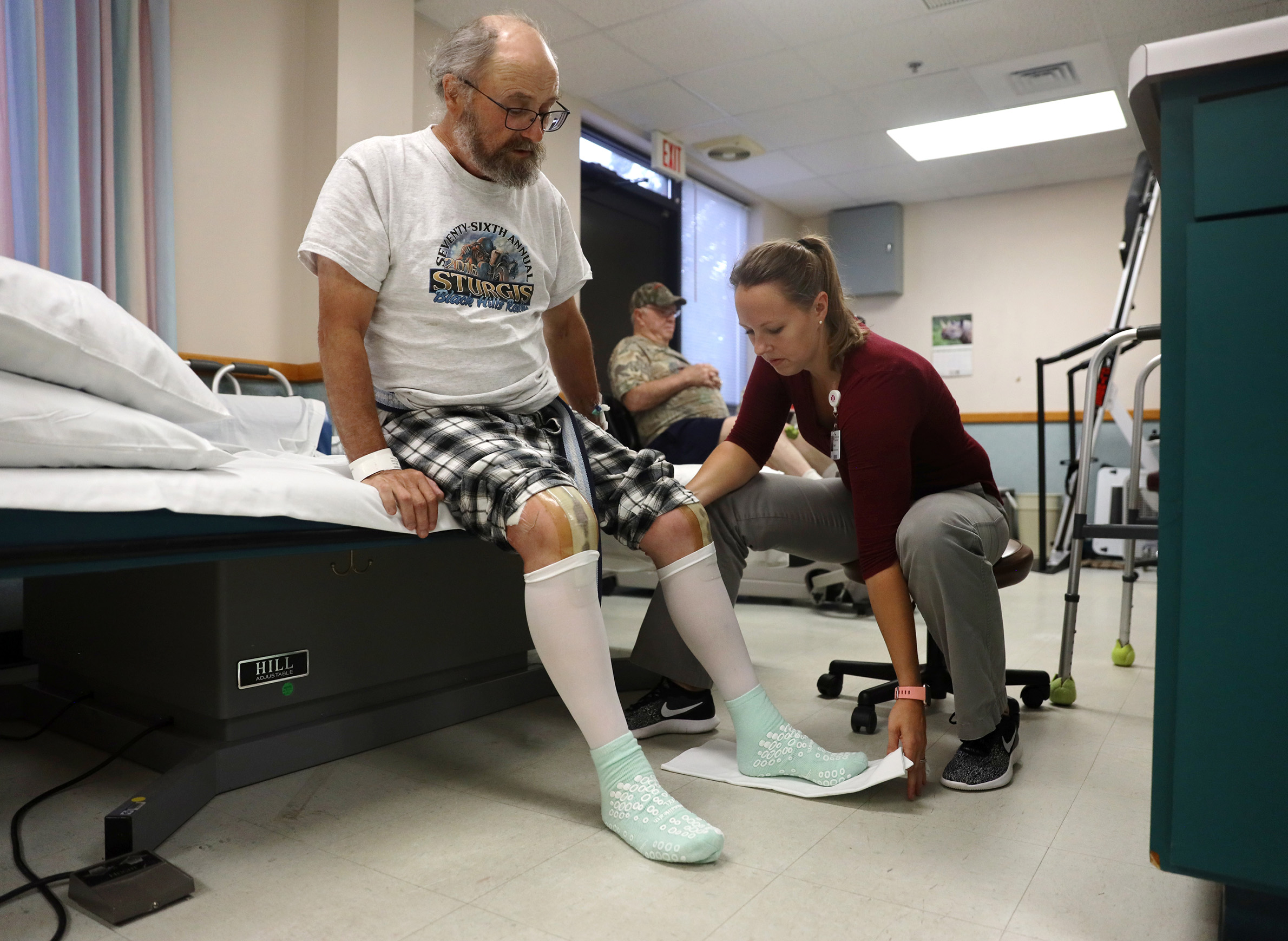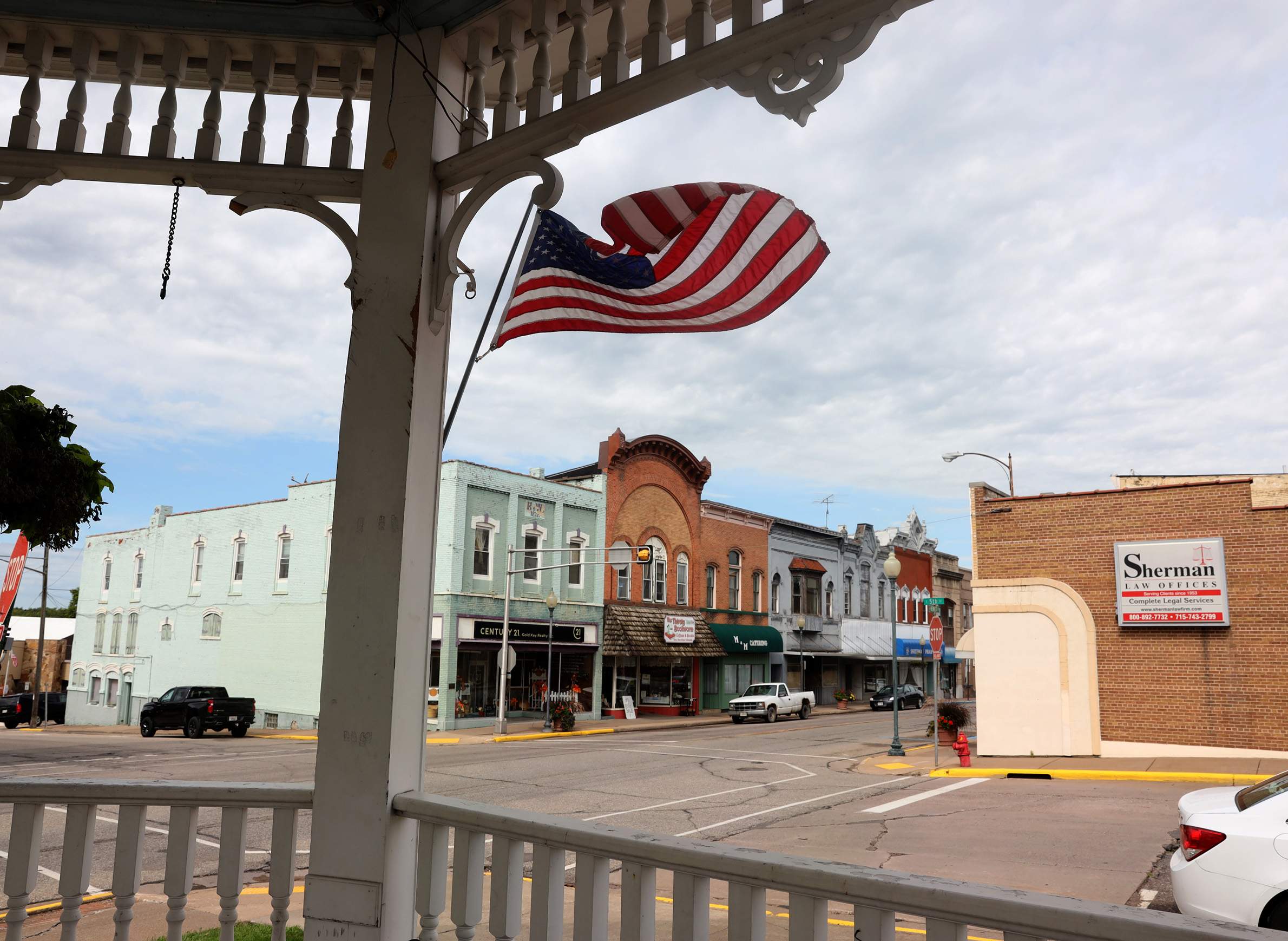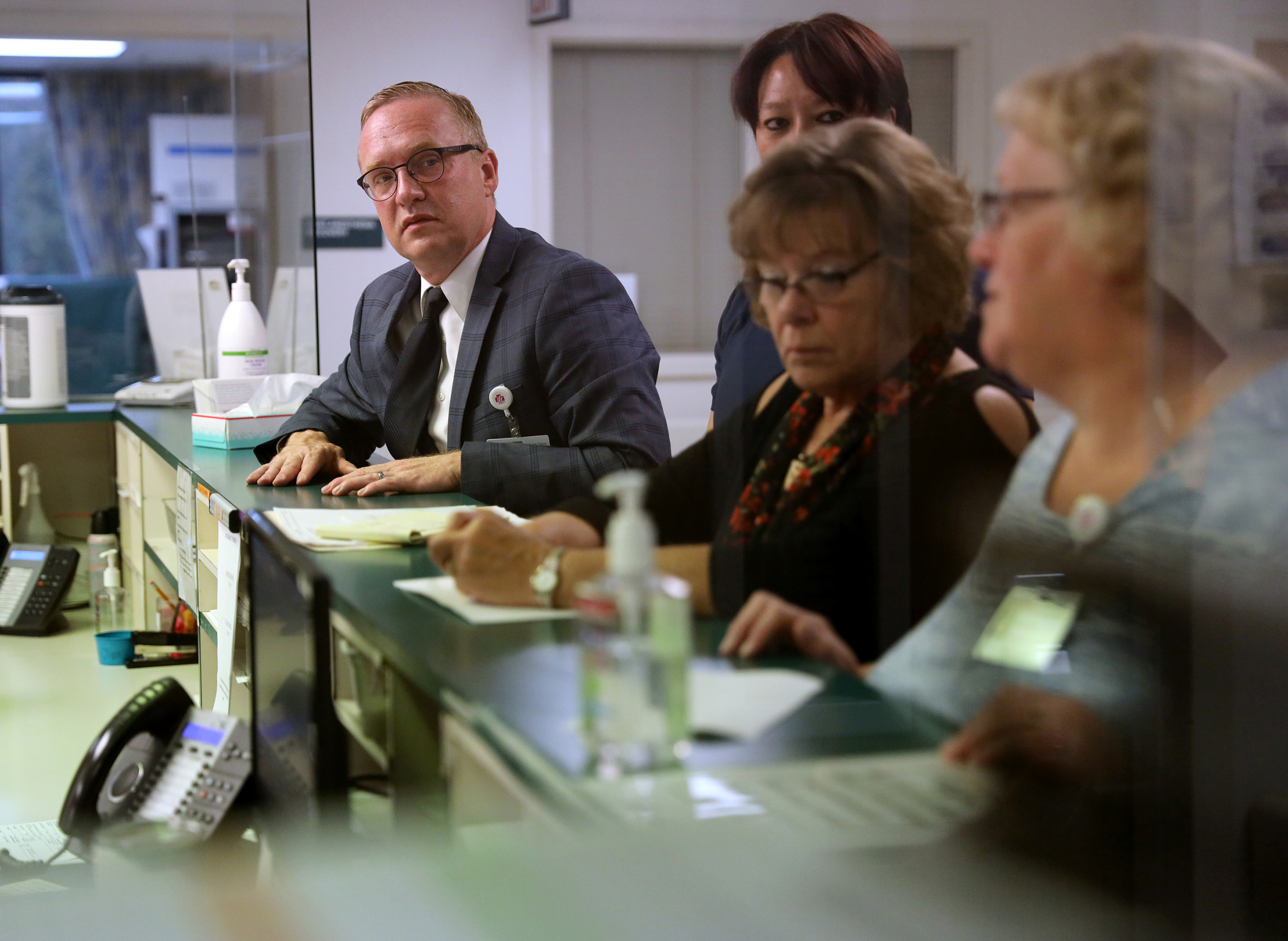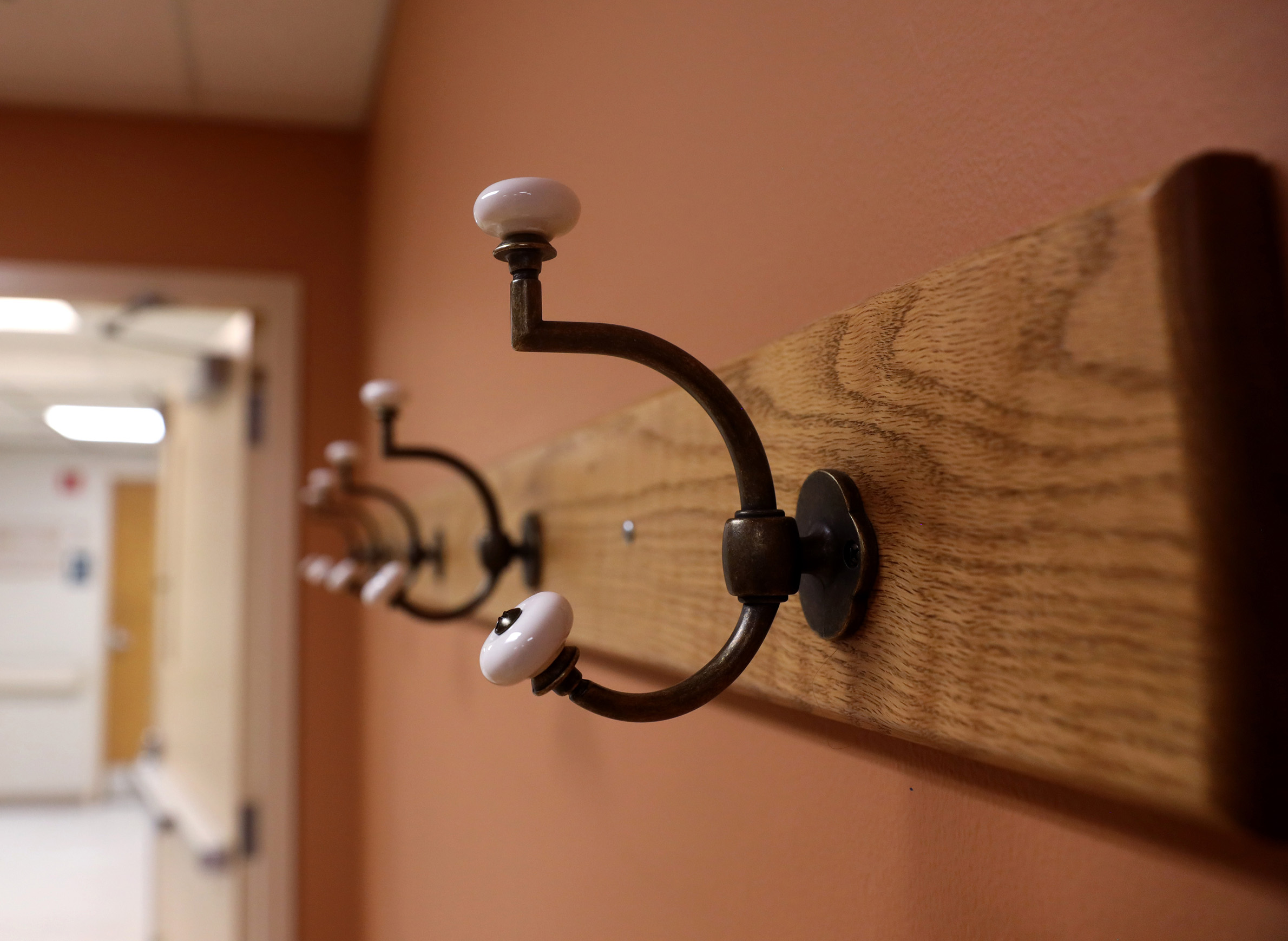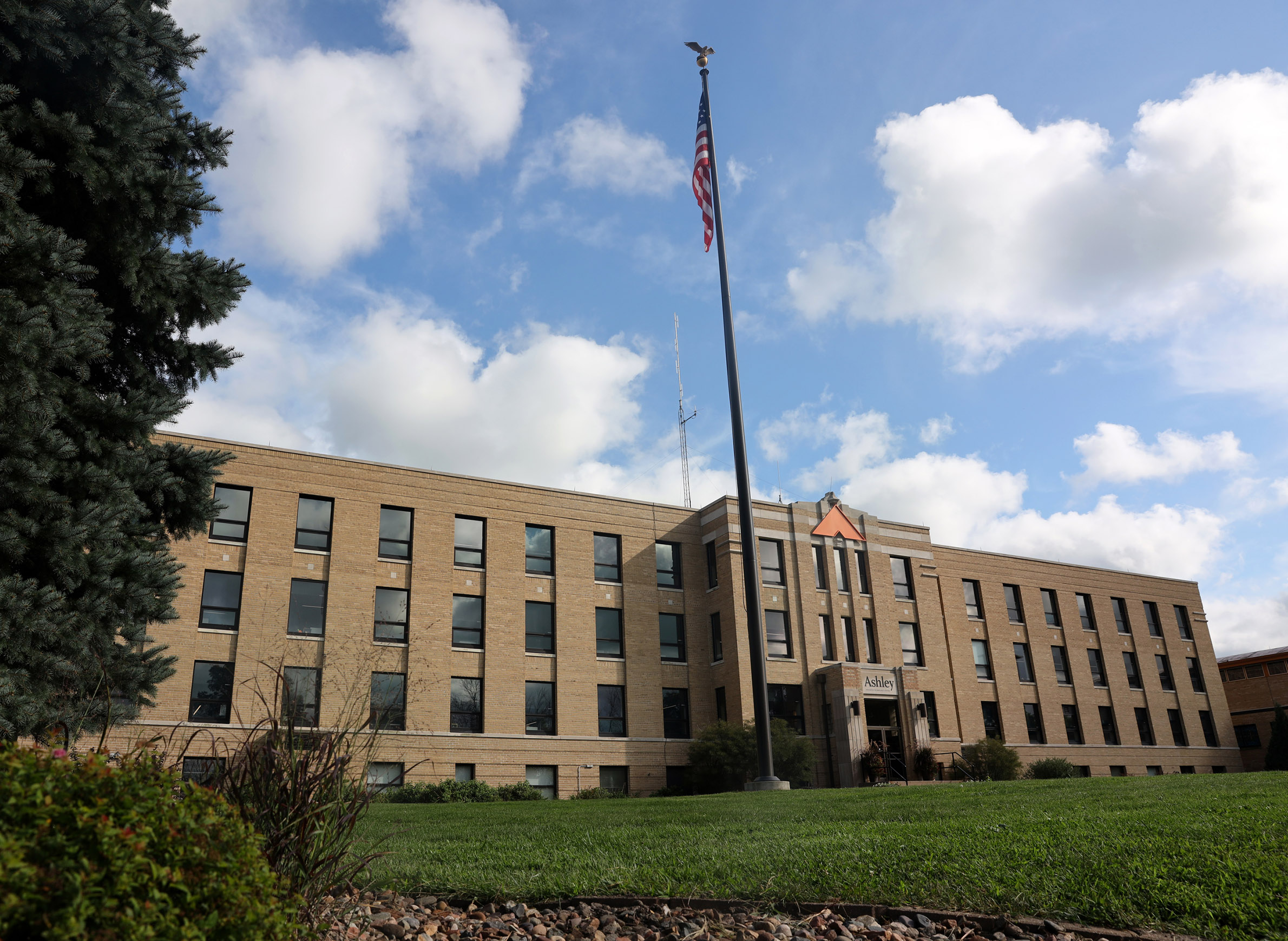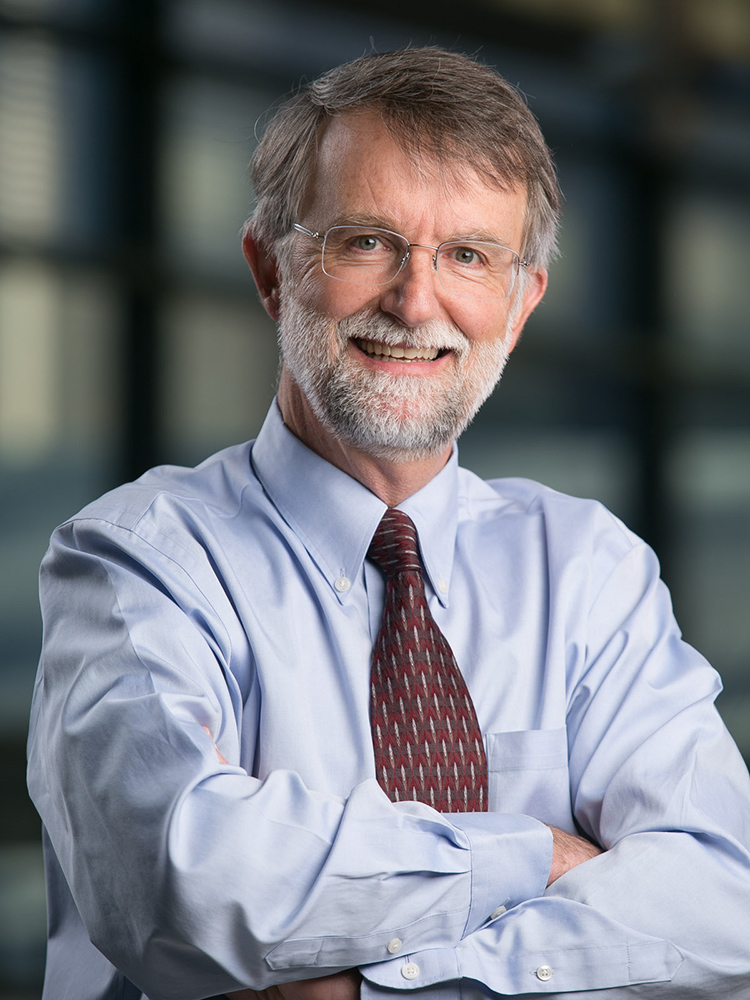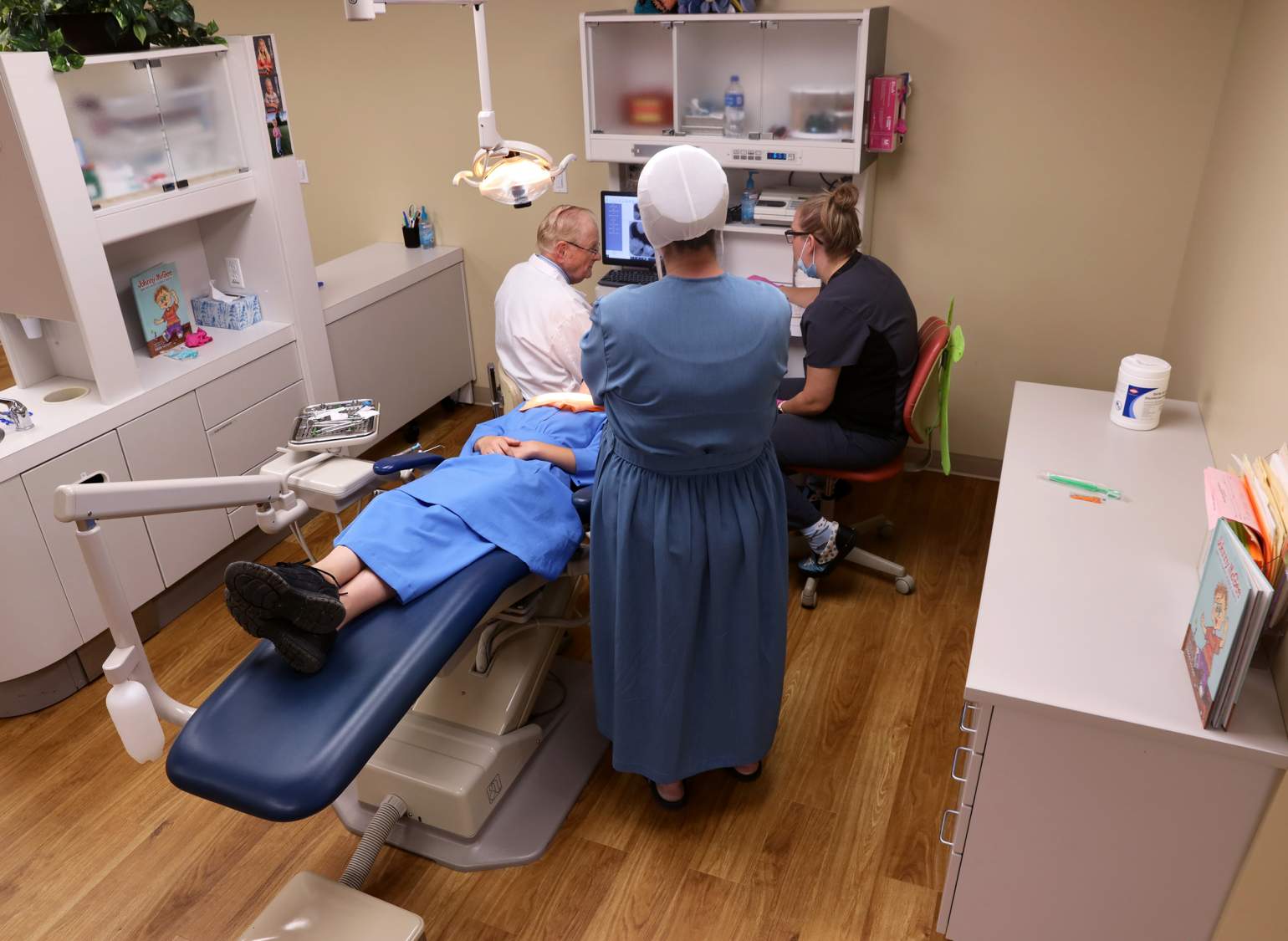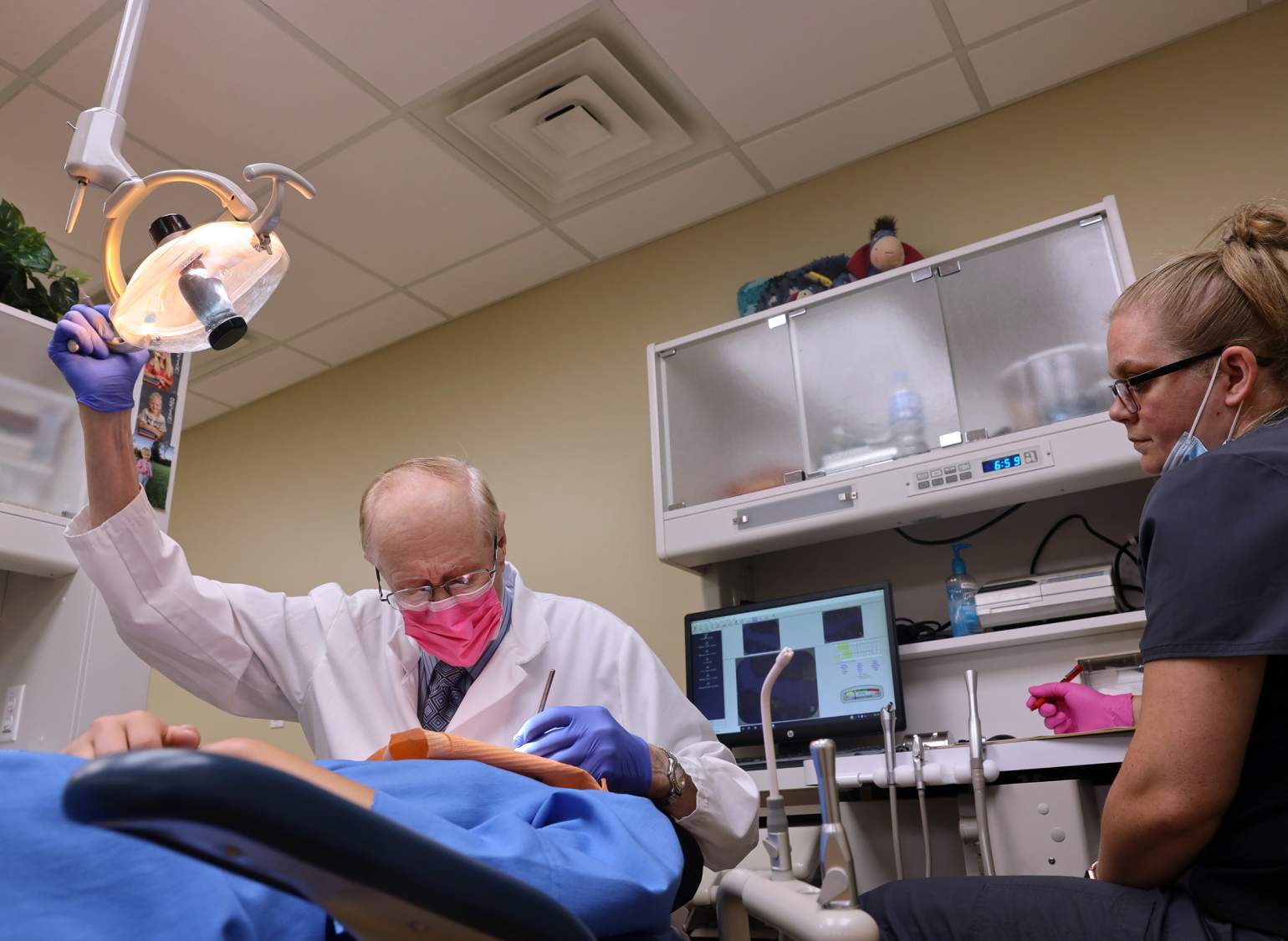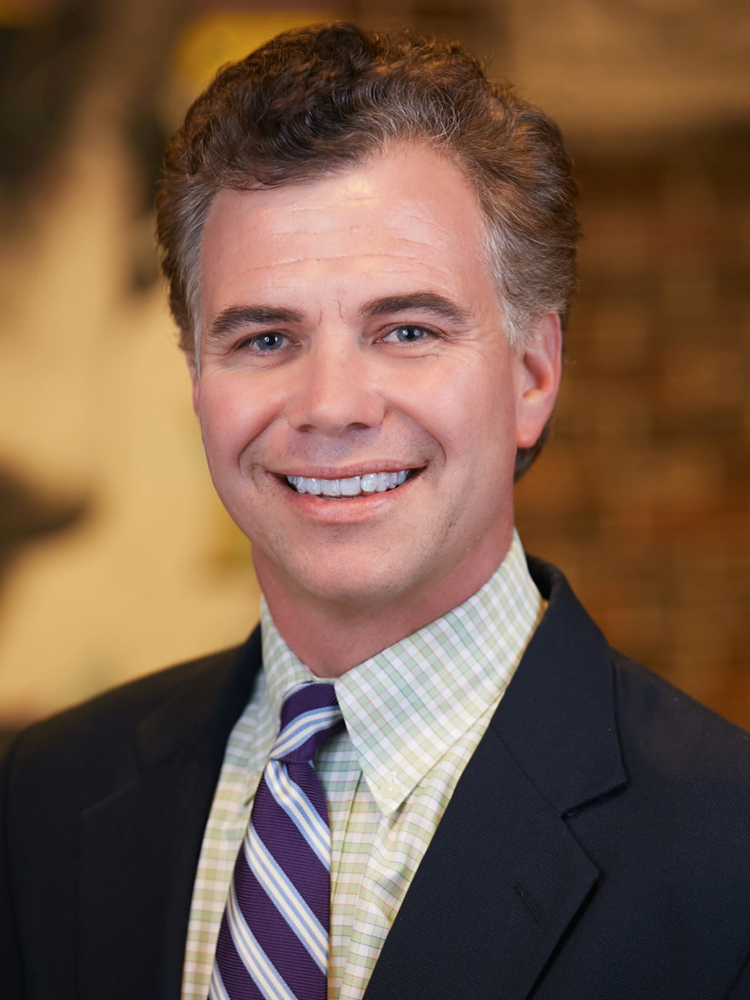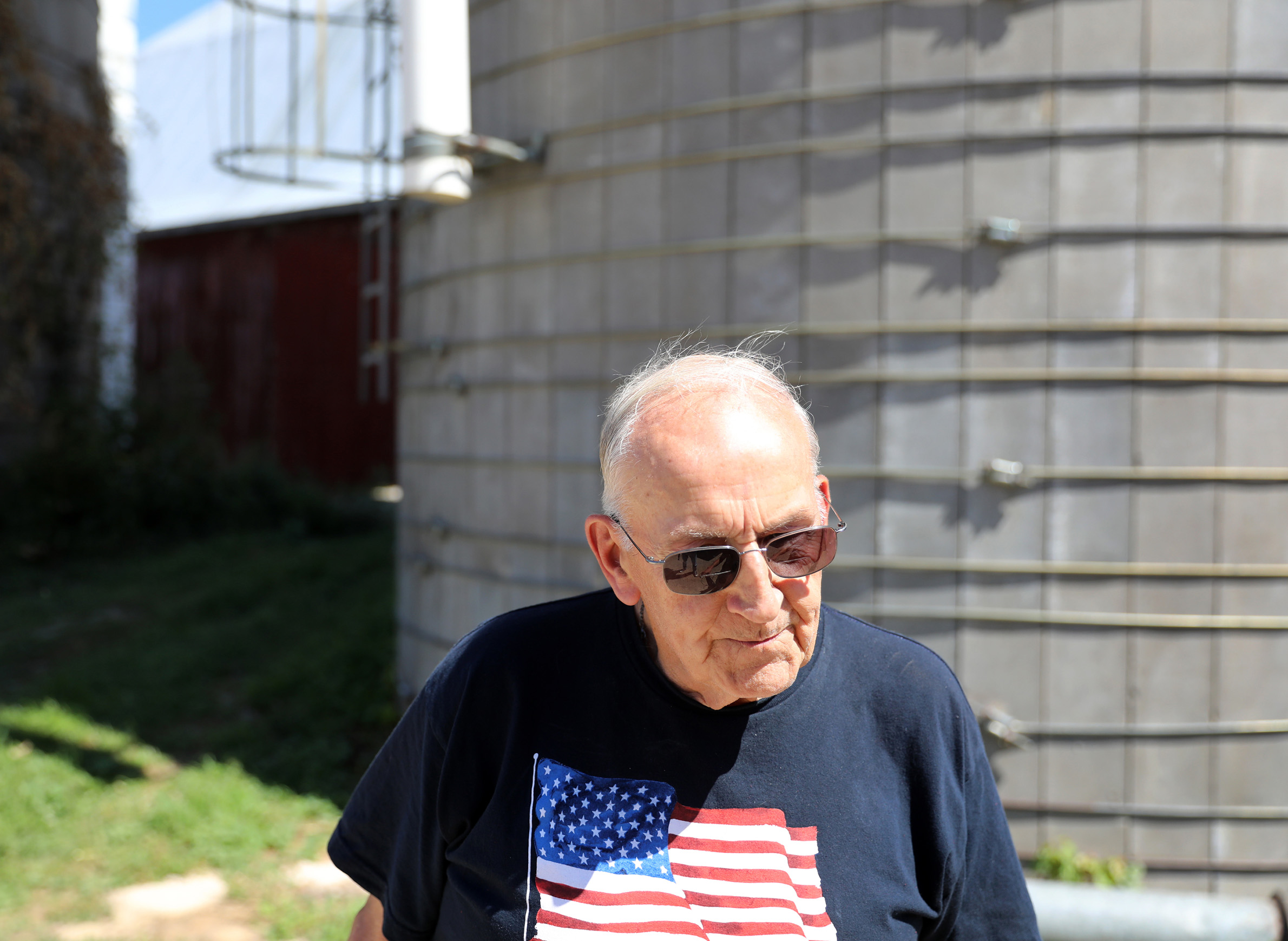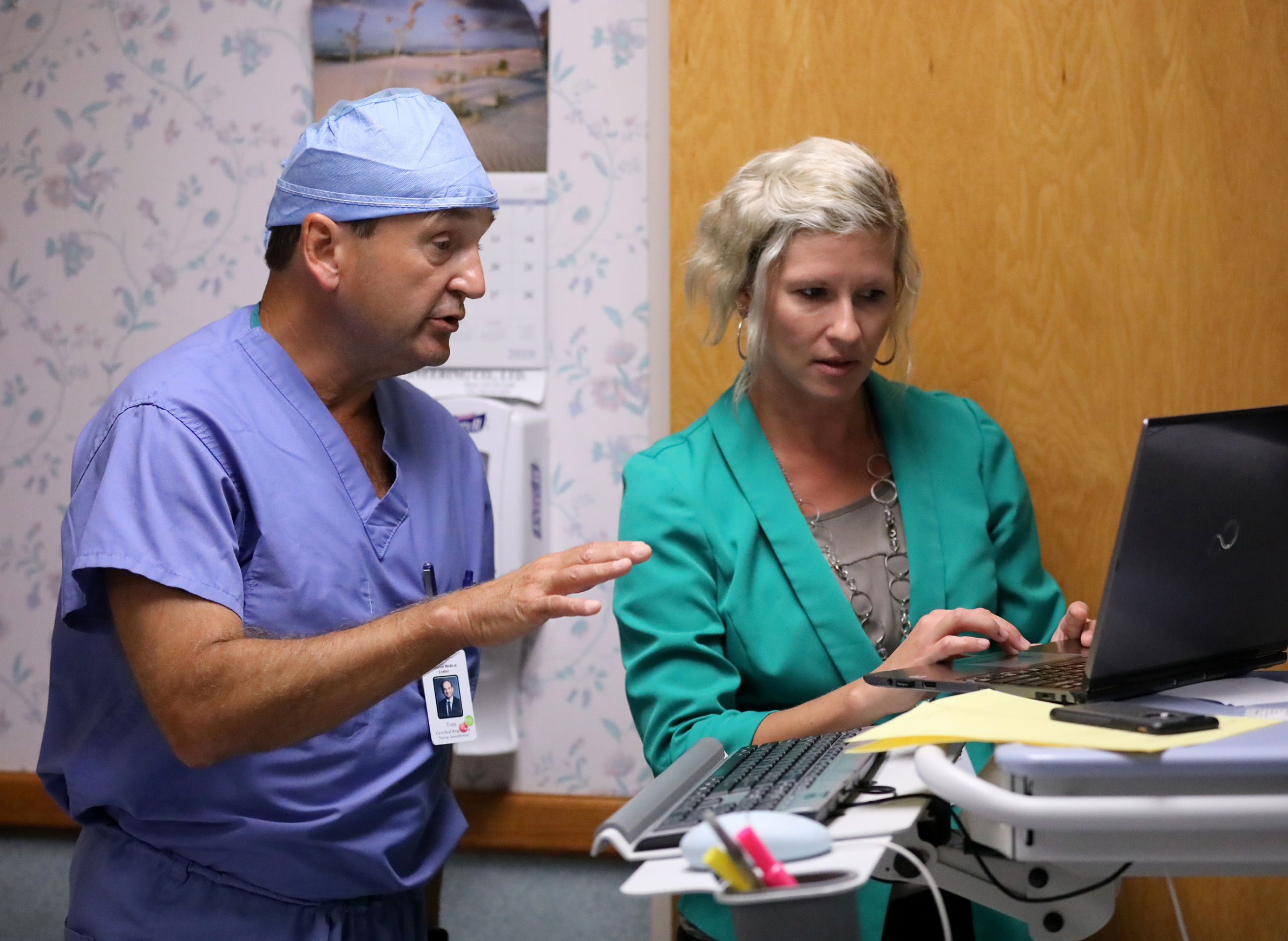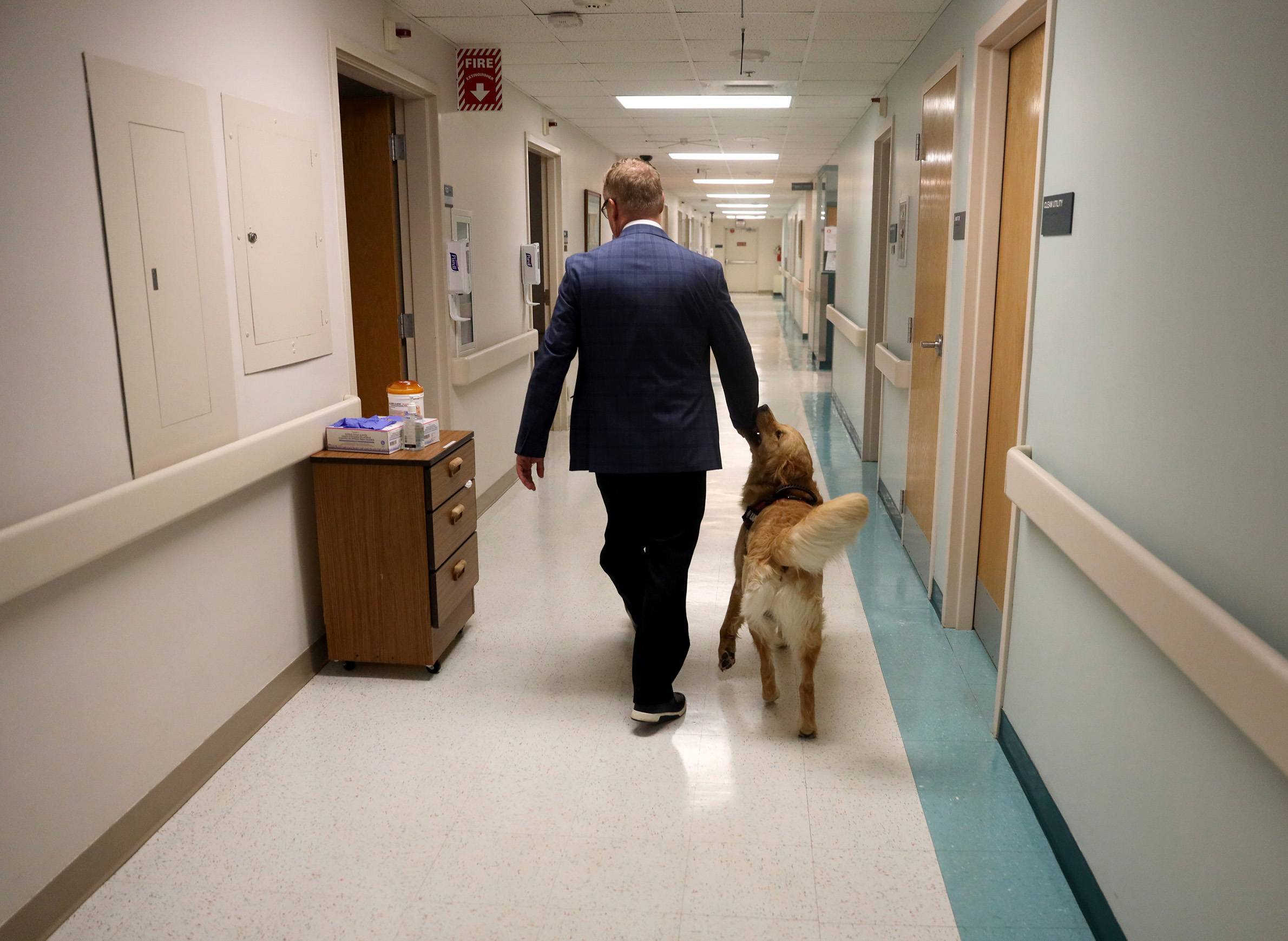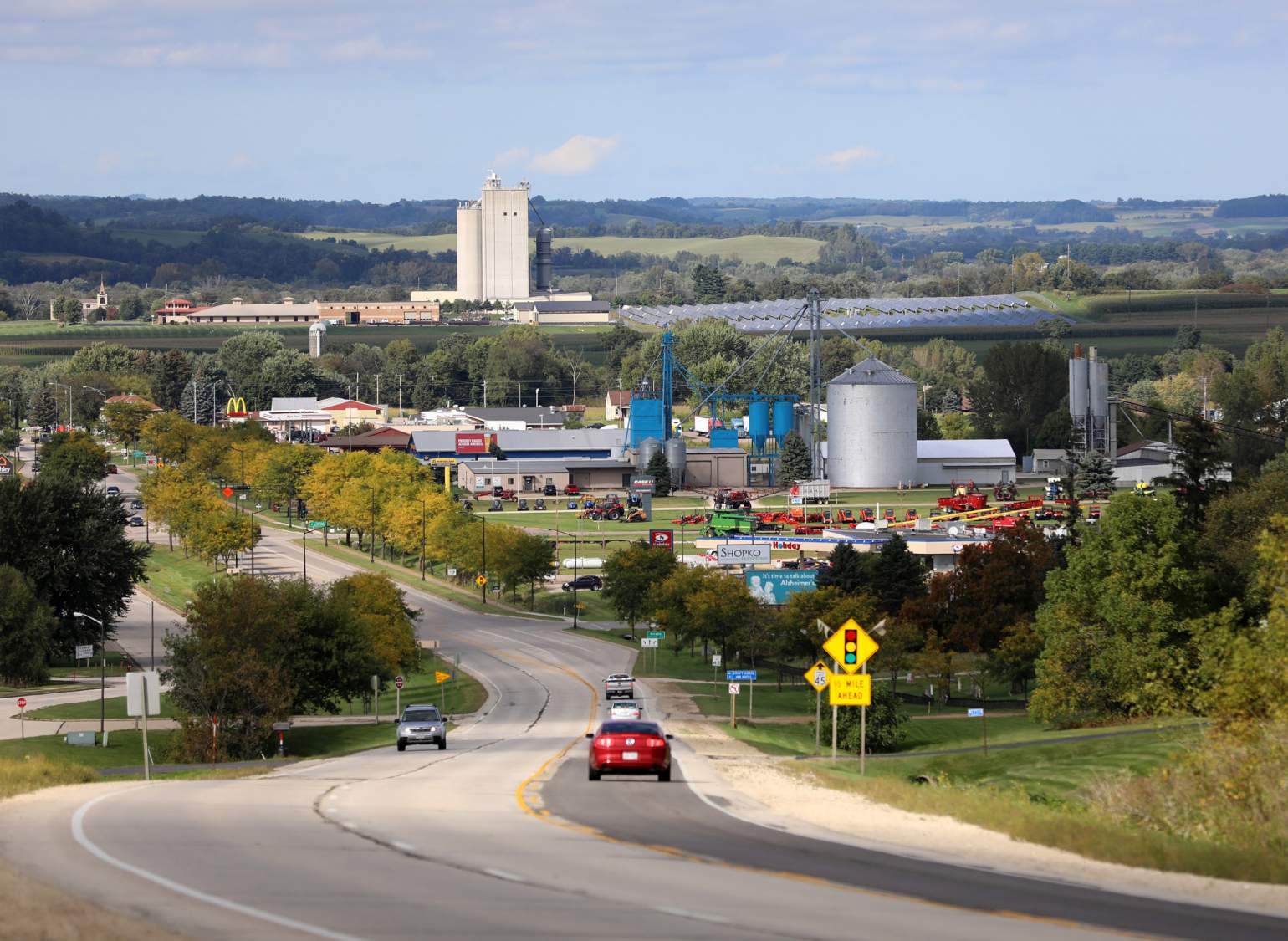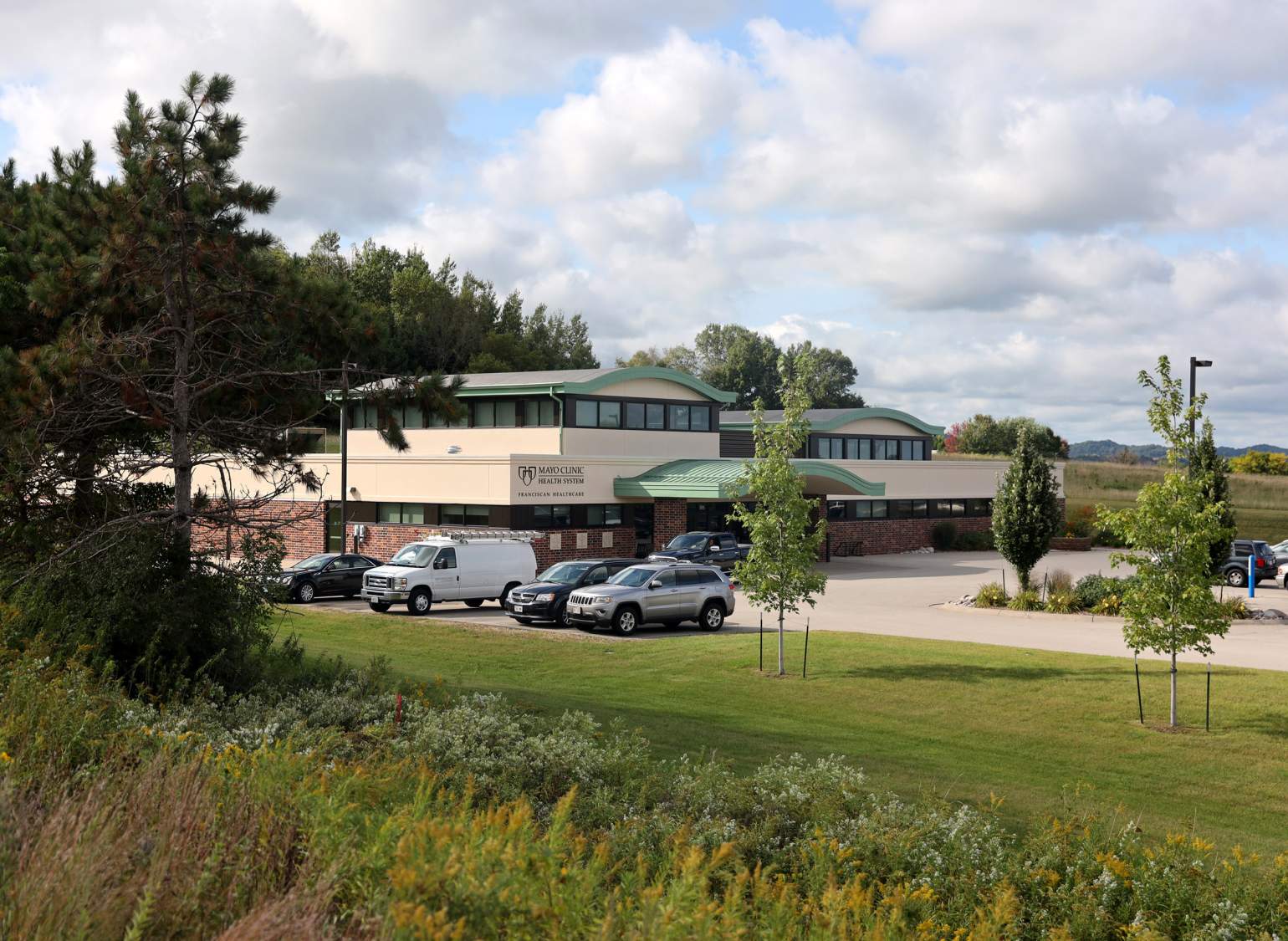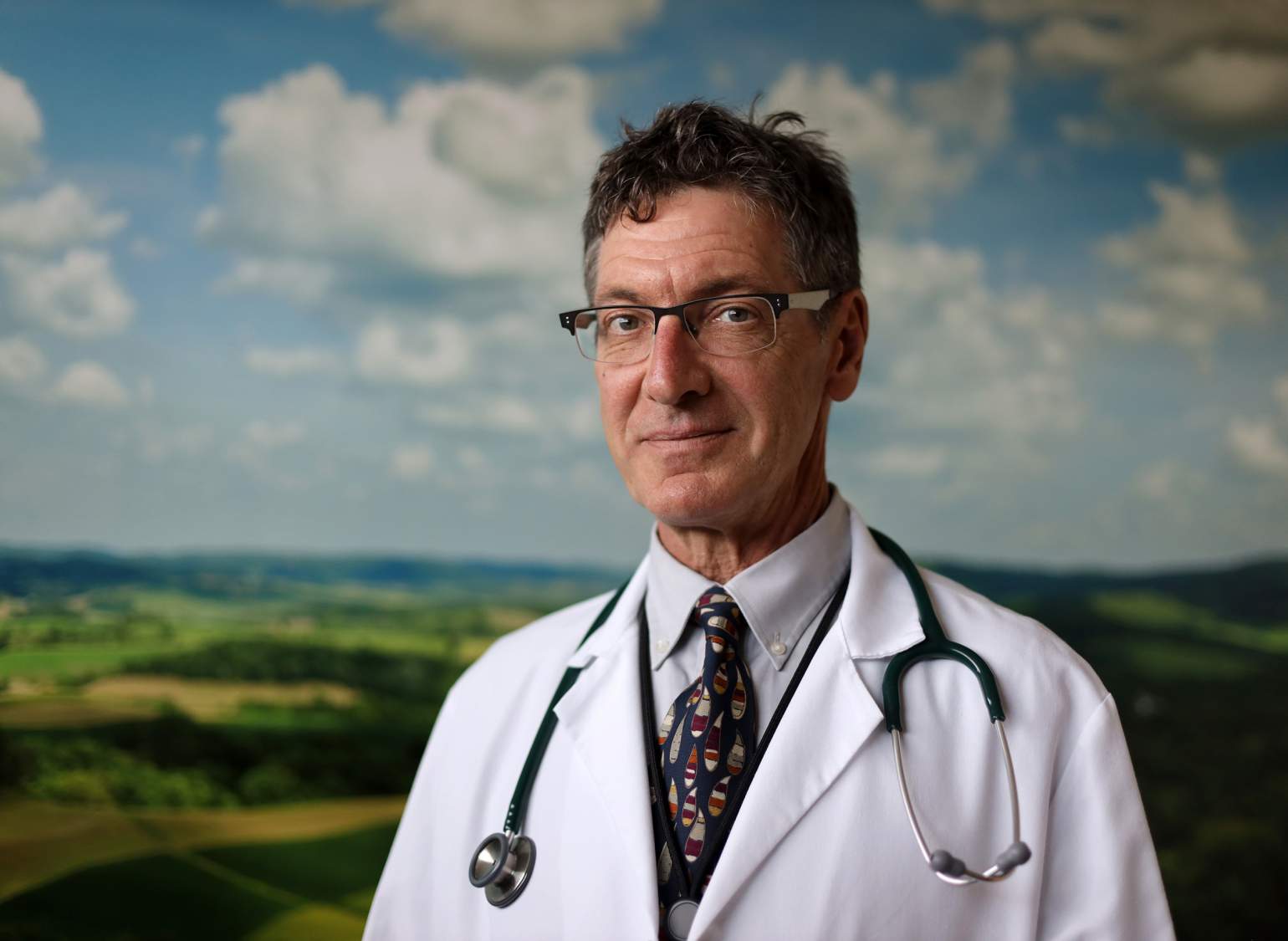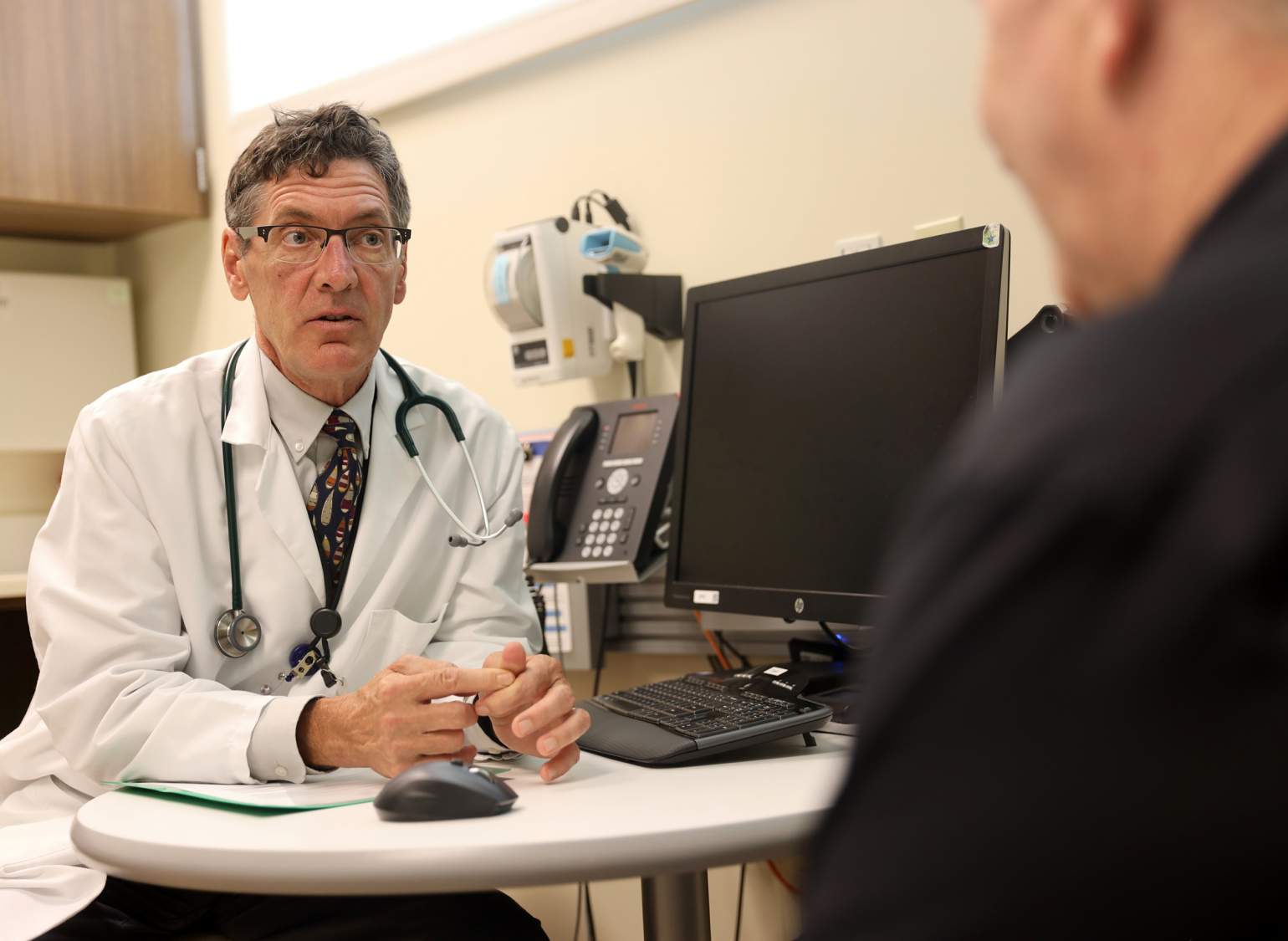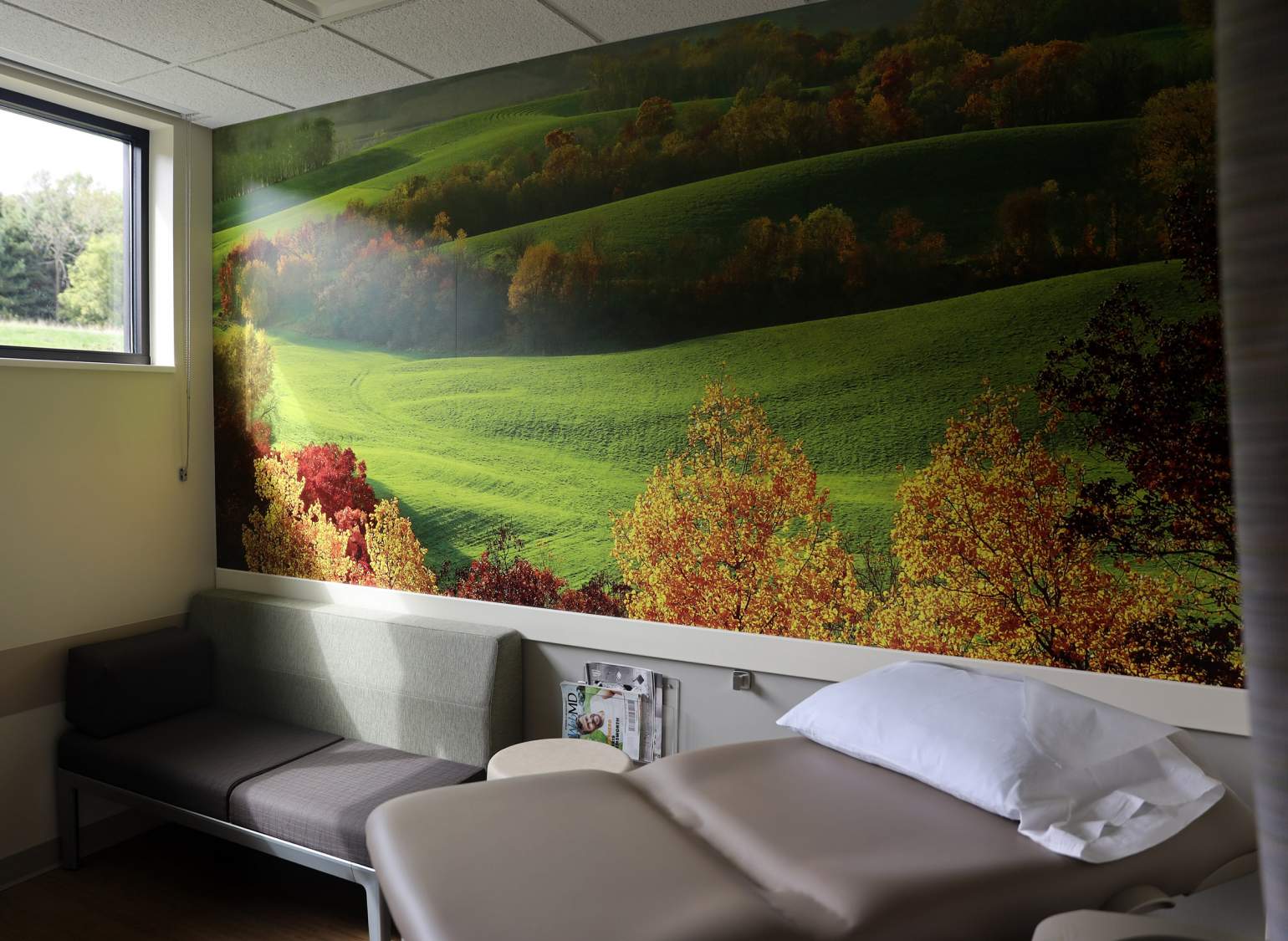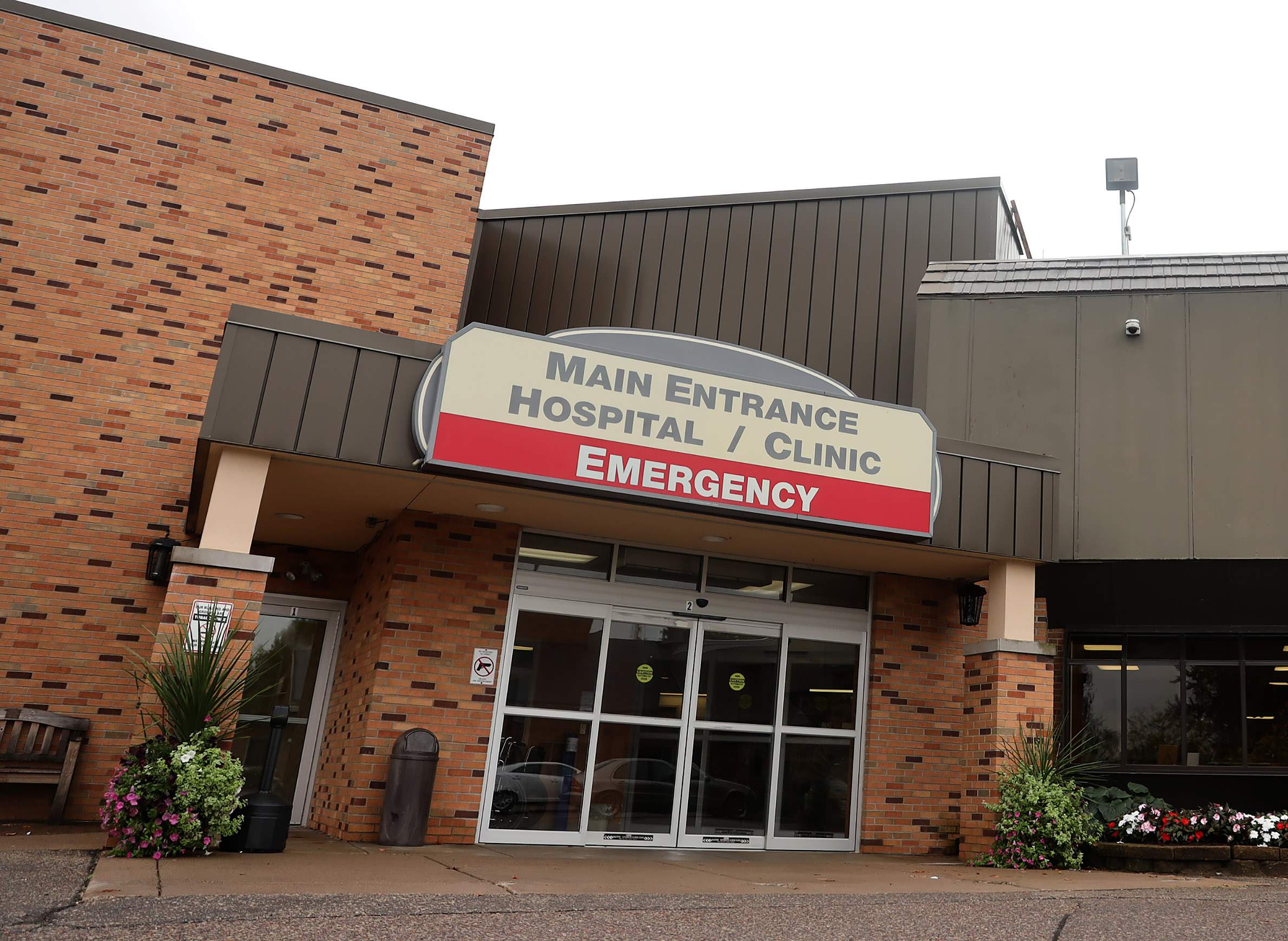
How Can Wisconsin's Rural Hospitals Keep Their Doors Open Amid A Wider Crisis?

When Ryan Neville was brought on as the chief executive of Memorial Medical Center, the sole hospital serving Clark County in west-central Wisconsin, it could not get a bank loan.
At that time, in 2013, rural safety net hospitals – those located more than 35 miles from another hospital – had a nationwide average of 69 days of cash reserves. But the Neillsville hospital lost $3 million that year and had enough reserves to pay its expenses for just four days.
The hospital needed new equipment to boost revenue. With few other options, it took the unusual step of turning to city hall, which helped the hospital get a $1.5 million loan.
"We are very thankful for that," Neville says. "I think without that loan that the city helped us get or backed us on, we potentially could've closed or been significantly downsized."
The hospital in central Wisconsin provides 24-hour trauma care in a county of 34,000 people spanning 1,200 square miles.
Had it closed, residents of the farming community would have had to drive 40 minutes to Marshfield or an hour to Eau Claire, turning some medical emergencies into catastrophes.
Nationwide, 155 rural hospitals have closed in the past 15 years, according to the North Carolina Rural Health Research Program. Nearly half of the remaining rural hospitals lose more money than they make, says Michael Topchik, national leader of the Chartis Center for Rural Health, a Chicago-based consulting firm.
Wisconsin has fared better than many states: Just one of its rural hospitals has closed in the past 10 years. Others have cut services or merged with larger systems to stay alive.
But as of 2017, one-fifth of Wisconsin's 76 rural hospitals were operating in the red, according to a report from Chartis and iVantage Health Analytics. According to Navigant, another Chicago-based health care consultant, nine such hospitals were in danger of closing, including two that are considered essential to the local community.
And a September 2019 report from the Wisconsin Hospital Association Information Center found unpaid medical bills continue to climb as 150 Wisconsin hospitals reported $1.2 billion in "bad debt" and charity care in fiscal year 2018 — an increase of nearly $90 million from fiscal year 2017.
Rural hospital closures can be deadly: Mortality rates for time-sensitive conditions like heart attacks and strokes increased by nearly 6% after a rural community lost its hospital, according to an August 2019 report on California's hospitals by University of Washington researchers.
Trapped under antiquated policies and infrastructure in communities with dwindling populations, some rural hospitals cannot afford to adapt to a rapidly evolving health care system.
"And we know that the politics right now around health care are as divisive as ever, so don't hold your breath," Topchik says. "But there's a lot of agreement that we need to do something ... because otherwise you're going to see a Dust Bowl vision … with all these small towns just drying up and blowing away like tumbleweeds."
Keeping beds open — but empty
The federal Critical Access Hospital designation is vital for many small rural hospitals. If hospitals meet requirements, including 25 or fewer inpatient beds, 24-hour emergency care and located more than 35 miles from another hospital, Medicare reimburses them at 101% of allowable cost, although the number is closer to 90% in reality because of cutbacks and what is deemed allowable, consultant Michael Topchik says.
That higher reimbursement is the only thing keeping some rural hospitals open. But it also locks them into a model of inpatient-focused care that no longer makes sense, says Dave Mosley, managing director of Navigant Health Care. Mosley says several hospital leaders have told him the only reason they maintain inpatient beds is to keep their critical-access designation.
Most rural and urban hospitals operate on a traditional fee-for-service model. Revenue is based on such items as the number of cases of pneumonia treated, broken arms fixed or vaccines administered
Compared to urban hospitals, rural hospitals treat more patients with government insurance, which generally pays less than private insurance, or without any insurance at all.
In Wisconsin, a private insurer will pay the hospital nearly three times what Medicare would pay, according to a 2019 Rand Corporation study. Medicare pays hospitals 88 cents for every $1 spent, while Medicaid pays 90 cents for every $1 spent on average. States set Medicaid reimbursement rates, and they can range from 81% to 130% of cost, according to a 2016 Medicaid and CHIP Payment and Access Commission report. And many uninsured cannot pay at all.
Technology has made health care easier and faster to deliver. For example, detecting a disease like colon cancer requires analyzing a strand of DNA from a stool sample. And where a full hip replacement would have meant a five-day hospital stay in 1985, it now can be done as an outpatient procedure, Mosley says.
But such technological advances can push rural hospitals into financial distress. In 2010, 71% of a hospital's revenue came from inpatient care while just 21% came from outpatient care. Five years later, that number had nearly flipped, with 60% coming from outpatient services, which bring in less revenue per patient than hospitalizations.
"So if you have Medicaid that pays less than cost, and you have Medicare that pays less than cost, in most cases, and then you have uninsured individuals, how exactly is the hospital supposed to make money? And the answer is: They very often cannot," Mosley says.
Four patients a night
The Neillsville hospital, for example, serves a county where 18% of residents are uninsured — the highest rate in the state. The county has high rates of poverty, too: 22% of Clark County's children live in poverty — significantly higher than the statewide average of 16%.
Hospitals spend money day-in, day-out on maintaining inpatient beds, running air conditioning and keeping the lights on regardless of whether they have any patients. Many rural hospitals, including Neillsville's, were built in the 1950s for a future rural America that never materialized.
"At that time, these rural areas were seen as bastions for further growth, so they built these hospitals, not just to serve the population that existed at that time, but to also serve what was expected to be a growing population," Dave Mosley says. "And now we've seen, of course, in many areas the rural communities are not growing. In fact, they've shrunk."
In Wisconsin, 31 of the 34 counties that lost population since 2010 are rural.
Neillsville has 17 hospital beds that remain mostly empty; it has an average of just four patients a night, although the beds are used for other services during the day. Some smaller community hospitals have less than one patient a day on average, Mosley says.
Low volume and adverse payer mixes have helped to plunge 16 of Wisconsin's 76 rural hospitals into the red. In some states, the picture is even worse: More than 70% of rural hospitals in Alabama, Kansas and Missouri lose more money than they make.
Michael Topchik says hospitals with good management can face tough situations and still survive, but "You can only get so lean and so mean."
Wisconsin's endangered hospitals
In 2018, Neillsville's hospital board faced a hard decision.
The multibillion-dollar Marshfield Clinic Health System and its state-of-the-art hospital were drawing away patients. Many businesses were choosing Security Health Plans, Marshfield's own insurer, which did not cover services rendered at Neillsville.
The hospital board debated whether the Neillsville hospital should remain independent or be absorbed by Marshfield. They chose the latter.
Neville calls it the "best move we've made," allowing the hospital to utilize the larger system's services including IT and human resources, increase the volume of patients and bring a rotating cast of specialists into the hospital, now named Marshfield Medical Center-Neillsville. In fact, Neillsville will soon get a new $46.8 million medical campus funded by the health system.
The deal Neillsville made is increasingly common. Mergers, acquisitions and affiliations of small, rural hospitals with large health systems have reduced the number of independent rural hospitals in Wisconsin to less than a dozen.
On average, rural hospitals that are affiliated with health systems have significantly improved operating margins, higher quality and outcomes and better patient satisfaction, Michael Topchik says.
But for some hospitals, the loss of independence has meant the loss of care. Units such as obstetrics and surgery have also been shuttered. A total of 152 communities in the United States have lost access to OB services since 2011, according to Chartis. Eleven of Wisconsin's rural obstetric units have closed in the past decade, including Neillsville's.
But in Wisconsin, only one rural hospital has closed in the past 10 years: Franciscan Skemp Medical Center in the western farming community of Arcadia, which closed in 2011.
Two of Wisconsin's most essential safety-net hospitals – one in Grantsburg and one in Durand — are at high financial risk, according to a Navigant report. University of Wisconsin professor emeritus Dr. Pat Remington was placed at the hospital in Grantsburg during his residency in the 1980s. It was thriving then, but he saw signs of what it would face in the future.
"I could see how that hospital, with that small rural community, would be challenged four decades later," says Remington, who runs the UW's preventive medicine residency program.
More income, better health
States like Wisconsin, with below-average poverty rates, have mostly avoided the rash of hospital closures that have swept across the South, Michael Topchik says.
"There is absolutely a Lake Wobegon effect, where the women are hard working, the men are good looking and the children are all above average. And then I like to add: And people tend to pay their hospital bills," he says. "And what do we attribute that to? Poverty. Poverty drives many of the health disparities we see around the country."
Researchers have estimated that flawed medical care is responsible for just 10% to 15% of preventable deaths. The rest is driven by non-medical social factors such as income, education and the neighborhoods in which people live. Disadvantaged neighborhoods have less access to fresh foods, higher concentrations of fast food restaurants and fewer opportunities for exercise.
Researchers including Topchik point to poverty as the most forceful factor; some epidemiologists call it the "cause of causes," ranging from bad cholesterol to brain function. Race can also have an independent, compounding effect.
Dr. Patrick Remington says the crisis in rural America is not shuttered hospitals, but lack of employment opportunities and the exodus of young people with education, leaving older people and the disadvantaged behind.
In Iron County, community leaders have recognized the connection and embarked on a trail building project they hope will improve the health and economy of the sparsely populated area in northern Wisconsin.
"Yes, you could save someone if you have good emergency medical services, but much of the death and disease that is attributed to rural communities is not from failure to have a hospital," Remington says. "Most of the death and disease and the increase in disparities is from the increased incidence of disease, from social and economic factors, from diabetes, from heart disease, substance abuse."
Tim Size, executive director of the Rural Wisconsin Health Cooperative, says "we all need to double down" on addressing such root causes. Of the 10 counties with the shortest life expectancy, nine are rural. Socioeconomic factors are more strongly correlated with poor health than clinical care, physical environment or health behaviors, according to data from the Robert Wood Johnson Foundation's County Health Rankings & Roadmaps.
"It's such a complex topic, and you can come at pieces of it, but to really understand any one piece you really have to have conversations, questions and answers around a whole bunch of different aspects," Size says. "It's so systemic."
Rural areas lack providers
For many of the same reasons young people move away from rural Wisconsin, such areas also have a hard time drawing and keeping doctors. Sixty-eight of Wisconsin's 72 counties qualify as Health Professional Shortage Areas for primary, dental or mental health care, according to Health Resources & Services Administration data.
Scenic Bluffs Community Health Centers in western Wisconsin are among the few places in the area that accept Medicaid for dental care. The waiting list is hundreds of people long, says Kim Cable, a housing and community services director of the community action group Couleecap, Inc.
"I meet with people whose teeth are rotting literally out of their mouth because they can't get care," Cable says. "Getting care when you need it is just not a reality."
Mental health providers are in similarly severe shortage. Sixteen rural counties do not have a psychiatrist, according to Wisconsin Medical Society data.
Topchik says not only are rural populations aging — a trend he described as a "silver tsunami," — but "we have a silver tsunami of aging providers as well."
Physicians in rural America are older than their urban counterparts. A report from the Wisconsin Council on Medical Education and Workforce projects physician shortages in many rural and urban areas by 2035.
"It's a double whammy. Not only do you have greater need because of the Baby Boomers aging out, but you're going to be hamstrung by less capacity as your own providers retire," he adds.
Health insurance out of reach for some
Jim Servais, 81, walks around his Stoddard dairy farm, barn cats slipping in between his feet. The barn sits at the top of a ridge with 1,000 acres of farmland draping down both sides.
He started milking 18 cows in 1974. Today, the organic farm has more than 300.
Servais says the health of farmers dips around age 60. His cousin, a rancher in Montana, said "they ranch until they die." Servais himself has his share of ailments.
"Everything's shot. Knees, hip and back. Ankle too," he says with a laugh.
Servais says he would not have been able to afford to get his knees replaced had it not been for his wife, who worked at the local school to get health insurance.
"And you know, I don't think there's any farmer today that can farm without somebody on the farm having a job with insurance," he says. "There's no way."
His son, Tim, now runs the farm. His son's family has qualified for BadgerCare, the state's Medicaid program for low-income residents.
"He goes through a lot of money, but with our prices depressed … it keeps him at the poverty level," Jim says.
Congress eyes new health care models
Congress is considering several bipartisan bills to change models of care to help rural hospitals, but they stand little chance of passing a divided Congress, Dave Mosley says. He says rural hospitals may have to give up on inpatient services, but they lack a way to make the transition.
One proposal, stalled in Congress, would allow rural safety-net hospitals to operate as standalone emergency departments, without maintaining beds. They would be reimbursed by Medicare at 110% of cost.
He says the federal government spends a lot of money maintaining unused inpatient hospital beds in rural areas, and "the money that Medicare would save is just unfathomable."
Another strategy to boost services is telehealth, in which providers check on patients through digital devices. But rural hospitals may not fully embrace the new technology until it is reimbursed by Medicaid as much as in-person visits. A bill backed by the Wisconsin Hospital Association aims to do that.
Some states, like Pennsylvania, have worked with the Center for Medicare & Medicaid Innovation to craft alternative payment models. Pennsylvania's "global budget" gives rural hospitals a fixed amount of money to use as they see fit to improve community health. If it results in fewer hospital stays, the hospital does not lose money. Mosley says states could embark on similar projects without waiting for Congress.
Expanding Medicaid under the Affordable Care Act also could help rural hospitals. States that did not expand Medicaid saw more hospital closures, Michael Topchik says. Rural hospital profits improved in states that did expand, according to researchers at the North Carolina Rural Health Research Program. Wisconsin was unique in that it partially expanded Medicaid under the ACA.
Non-expansion states, many of them in the South, also suffer under "bad debt" and "stingy" Medicaid programs, Topchik says.
"They're getting clobbered, they're just getting absolutely clobbered," he says of states that declined to expand Medicaid. "Their politics have made them poorer."
Tim Size is optimistic that Wisconsin will solve the challenges facing rural health care.
"If we do nothing, and we just kind of cry in our beer, I don’t think it's a very good future."
Hospital closing hits Arcadia
Wisconsin's lone rural hospital closure since 2005 was in 2011 in Arcadia, located between La Crosse and Eau Claire. The area's nursing home closed soon after the hospital was shuttered, and the town's pharmacy recently closed when Shopko went out of business.
Family physician Dr. Bert Hodous used to work at the Arcadia hospital. He now works at the Mayo Clinic Health Systems' clinic in Arcadia. He acknowledges that the hospital was old and required upgrades. The payer mix included a large number of Medicaid patients, and the nursing home lost money week after week, he says.
Since the hospital and pharmacy closed, Hodous says it is not uncommon for people to drive an hour to La Crosse to get their prescriptions. And that, he believes, is not good for the community.
"There's a lot of elderly people here and we also have families with kids … and their perception and the confidence that you feel in your heart is affected by your sense of the community having resources in place that you can access," Hodous says. "And the loss of the hospital kind of gutted that confidence and that sense of safety."
This report is part of a collaborative project titled "Seeking a cure: The quest to save rural hospitals." It includes the Institute for Nonprofit News and members IowaWatch, KCUR, Bridge Magazine, Wisconsin Watch, Side Effects Public Media and The Conversation, as well as Minnesota Public Radio, Wisconsin Public Radio, Iowa Public Radio, The Gazette, Iowa Falls Times Citizen and N'west Iowa Review. The project was made possible by support from the Institute, with additional support from the Solutions Journalism Network, a nonprofit organization dedicated to rigorous and compelling reporting about responses to social problems. The nonprofit Wisconsin Watch collaborates with Wisconsin Public Radio, Wisconsin Public Television, other news media and the University of Wisconsin-Madison School of Journalism and Mass Communication. All works created, published, posted or disseminated by the Center do not necessarily reflect the views or opinions of UW-Madison or any of its affiliates.
This report is the copyright © of its original publisher. It is reproduced with permission by WisContext, a service of PBS Wisconsin and Wisconsin Public Radio.



